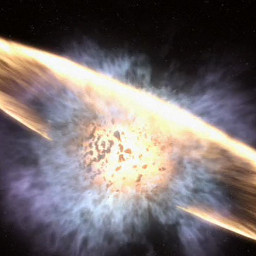I have a server running Debian with 24 TB of storage. I would ideally like to back up all of it, though much of it is torrents, so only the ones with low seeders really need backed up. I know about the 321 rule but it sounds like it would be expensive. What do you do for backups? Also if anyone uses tape drives for backups I am kinda curious about that potentially for offsite backups in a safe deposit box or something.
TLDR: title.
Edit: You have mentioned borg and rsync, and while borg looks good, I want to go with rsync as it seems to be more actively maintained. I would like to also have my backups encrypted, but rsync doesn’t seem to have that built in. Does anyone know what to do for encrypted backups?
I put the prndl in r and just goose it
do you use a COW fs?, using snapshots could be helpful
Helpful yes, but far from enough. It only helps in some scenarios (like accidental deletes, malware), but not in many others (filesystem corruption, multiple disks dying at once due to e.g. lightning, a bad PSU or a fire).
Offsite backup is a must for data you want to keep.
Just want to note here:
Snapshots are NOT a backup.
While btrfs is quite stable corruption/disk failure can always happen. Bcachefs had a little opsie daisy that caused some FS level corruption. Snapshots won’t help in this case.
Snapshots are great for quick restoration on user error.
bcachefs is very early tho, and the corruption was reversible becuase of the COW nature, but i agree
I use rclone, which is essentially rsync for cloud services. It supports encrypion out of the box.
I like the versatility of rclone.
It can copy to a cloud service directly.
I can chain an encryption process to that, so it encrypts then backs up.
I can then mount the encrypted, remote files so that I can easily get to them locally easily (e.g. I could run diff or md5 on select files as naturally as if they were local).
And it supports the rsync --backup options so that it can move locally deleted files elsewhere on the backup instead of deleting them there. I can set up a dir structure such as Oldfiles/20240301 Oldfiles/20240308 Etc that preserve deletions.
Important stuff (about 150G) is synced to all my machines and a b2 Backblaze bucket.
I have a rented seed box for those low seeder torrents.
The stuff I can download again is only on a mirrored lvm pool with an lvmcache. I don’t have any redundancy for my monerod data which is on an nvme.
I’m moving towards an immutable OS with 30 days of snapshots. While not the main reason, it does push one to practicing better sync habits.
Acronyms, initialisms, abbreviations, contractions, and other phrases which expand to something larger, that I’ve seen in this thread:
Fewer Letters More Letters Git Popular version control system, primarily for code NAS Network-Attached Storage PSU Power Supply Unit RAID Redundant Array of Independent Disks for mass storage SSD Solid State Drive mass storage VPS Virtual Private Server (opposed to shared hosting)
6 acronyms in this thread; the most compressed thread commented on today has 10 acronyms.
[Thread #642 for this sub, first seen 30th Mar 2024, 20:45] [FAQ] [Full list] [Contact] [Source code]
- What backup service do you use? - Lemmy.world
- What are your backup solutions? - Lemmy.world
- How do you guys back up your server? - Lemmy.world
- How do you backup things to your server? - Lemmy.world
- How to store backups? - Lemmy.world
- How do you backup your data? - Lemmy.world
- Need help with a backup solution - Lemmy.World
to your edit: rsync is a tool to copy/move files, borg is a backup utility. there are scripts that use rsync to create proper backups, but if you want to go by ‘more actively maintained’ you should look into how these scripts are maintained, not rsync itself.
on the other hand - borg is actively maintained, there even are releases in the last two days, one stable and one beta. it also fulfills your ‘encrypted backup’ requirement and has a versioned backups built in.
tl;dr comparing borg backup and rsync is comparing apples and orangesYour right, I’m sold.
My use case is basically the same as yours.
I do restic to Wasabi.
I’ve been on restic for a few years now and have never had an issue. I started out using Google Drive for the backend but that was though my college which went away eventually so I swapped over to Wasabi but I’m considering B2.
It’s actively maintained and encrypted.
There are a handful of backends it supports but can be extended by writing to an rclone backend.
I have a machine at my parents’ house that has a single 20TB drive in it. I’ll log in once in a while and initiate an rsync to bring that up to current with my RAID at home. The specific reason I do it manually is in case there’s a ransomware attack. I won’t copy bad data. That’s also the reason I start it from the backup machine. The main machine doesn’t connect, the backup machine does, so ransomware wouldn’t cross that virtual boundary.
I would like to replicate your setup in the future. How do you connect between the two machines, using tailscale or something like that?
It’s just over ssh. They’ve both got their own subdomains.
Anything I can download again doesn’t get backup, but it sits on a RAID-1. I am ok at losing it due to carelessness but not due to a broken disk. I try to be carefully when messing with it and that’s enough, I can always download again.
Anything like photos notes personal files and such gets backedup via restic to a disk mounted to the other side of the house. Offsite backup i am thinking about it, but not really got to it yet. Been lucky all this time.
From 10tb of stuff, the totality of my backupped stuff amount to 700gb. Since 90% of are photos, the backup size is about 700gb too. The actually part of that 700gb that changes (text files, documents…) amount to negligible. The photos never change, at most grow a bit over time.
For offsite I backup to aws Glacier. Cheap to store expensive to retrieve. When the house burns down I’ll still have the photos somewhere and at that point the cost is negligible compared to losing them since it really is worst case scenario.
For offsite I backup to aws Glacier. Cheap to store expensive to retrieve. When the house burns down I’ll still have the photos somewhere and at that point the cost is negligible compared to losing them since it really is worst case scenario.
I’ve been using Borg and Hetzner Storage Box. There are some small VPS hosts that actually beat Hetzner’s pricing but I have been happy with Hetzner so am staying there for now. With 24TB of data you could also look at Hetzner’s SX64 dedicated server. It has a 6 core Ryzen cpu and 4x 16TB HDD’s for 81 euro/month. You could set it up as RAID 10 which would give you around 29 TiB of usable storage, and then you also have a fairly beefy processor that you can use for transcoding and stuff like that. You don’t want to seed from it since Hetzner is sticky about complaints that they might get.
Tape drives are too expensive unless you have 100s of TB of data, I think. Hard drives are too unreliable. If you leave one in a closet for a few years, there’s a good chance it won’t spin back up.
for 81 euro/month.
You can probably find something cheaper from their auction servers.
I’ve got a storage VPS with HostHatch for my backups. It’s one of their Black Friday deals from a few years ago - 10TB storage for $10/month. Not sure they’ll offer that pricing again, but they did have something similar for around double the price during sales last year (still a good deal!)
Tape drives are too expensive unless you have 100s of TB of data, I think
The drives are expensive, and some manufacturers have expensive proprietary software, but the tapes themselves are cheaper per TB than hard drives, and they usually have a 20 or 30 year life guarantee. People seem to think tapes is old technology but modern tapes can fit 18TB uncompressed (they say 45 TB compressed but idk).
The default tier of AWS glacier uses tape, which is why data retrieval takes a few hours from when you submit the request to when you can actually download the data, and costs a lot.
The default tier of AWS glacier uses tape, which is why data retrieval takes a few hours from when you submit the request to when you can actually download the data, and costs a lot.
AFAIK Glacier is unlikely to be tape based. A bunch of offline drives is more realistic scenario. But generally it’s not public knowledge unless you found some trustworthy source for the tape theory?
Short answer: figure out how much of that is actually irreplaceable and then find a friend or friends who’d be willing to set aside some of their storage space for your backups in exchange for you doing the same.
Tailscale makes the networking logistics incredibly simple and then you can do the actual backups however you see fit.
As of today I’m actually in a lucky position where I am now able to set up a secondary NAS at my brother in laws and use that as a backup server that I can back up to essentially in real time.
All it’ll cost me is the hardware and the electricity.
It depends on the value of the data. Can you afford to replace them? Is there anything priceless on there (family photos etc)? Will the time to replace them be worth it?
If its not super critical, raid might be good enough, as long as you have some redundancy. Otherwise, categorizing your data into critical/non-critical and back it up the critical stuff first?
RAID is not backup. Many failure sources from theft over electrical issues to water or fire can affect multiple RAID drives equally, not to mention silent data corruption or accidental deletions.
Yeah…I’ve never totally lost my main storage and had to recover from backups. But on a number of occasions, I have been able to recover something that was inadvertently wiped. RAID doesn’t provide that.
Also, depending upon the structure of your backup system, if someone compromises your system, they may not be able to compromise your backups.
If you need continuous uptime in the event of a drive failure, RAID is an entirely reasonable thing to have. It’s just…not a replacement for backups.
Oh, all my drives are RAID too, mostly for the convenience of being able to use them while I order a replacement for a failed drive and not having to restore from backup once I get that.
Its not, but if the value of the data is low, its good enough. There is no point backing up linux isos, but family photos definitely should be properly backed up according to 3-2-1.
I backup my /home folder on my PC to my NAS using restic (used to use borg, but restic is more flexible). I backup somewhat important data to an external SSD on a weekly basis and very important data to cloud storage on a nightly basis. I don’t backup my *arr media at all (unless you count the automated snapshots on my NAS), as it’s not really important to me and can simply be redownloaded in most cases.
So I don’t and wouldn’t apply the 321 rule to all data as it’s simply too expensive for the amount of data I have and it’d take months to upload with my non-fiber internet connection. But you should definitely apply it to data that’s important to you.








